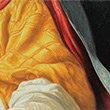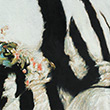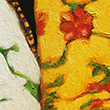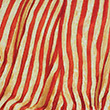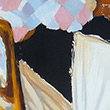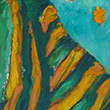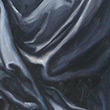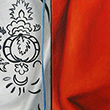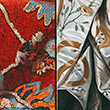
DRAPERIES - Painting about Painting
How can we see that a particular work of art is from a certain period? How can we see whether a painting is French, Italian or Dutch etc.?
And, despite culturally enhanced conformities: How do painters discern themselves from others? How do they try to stick out? How are they trying to impress the spectator? How do they want to be recognized? In short: What is their style?
In art history, drapery refers to any cloth or textile depicted. Draperies have remained a major source of stylistic formulas in sculpture and painting since their emergence in ancient Egyptian art. They are formally the oldest theme in art.
Rob de Vrij demonstrates the individuality of the old (and not so old) masters in studying the draperies in their paintings. It is in the fabric where individual freedom seems stronger (than for example in the faces or backgrounds) and where the expressive use of color and the dynamics in the composition can be enhanced. By isolating the draperies out of their context of story or theme, Rob de Vrij selects those formal aspects where the specifics of the artist’s style can be observed best: a penchant for certain colors and color combinations, shades of color through specific light conditions and, besides light and color, handwriting and gesture.
Rob de Vrij neither intends to abstract parts of the original, nor does he impart an individual interpretation through his own artistic temperament onto the sample. He demonstrates that classic art is a treasure of accumulated knowledge and skill about human perception.
Human perception as an ongoing process, like it has been studied for centuries. It shows painting not as a mirror of the world, but as representation of human observation, as depiction of seeing.
(Prof. Norbert M. Schmitz: “Glanz der Wahrnehmung”)




